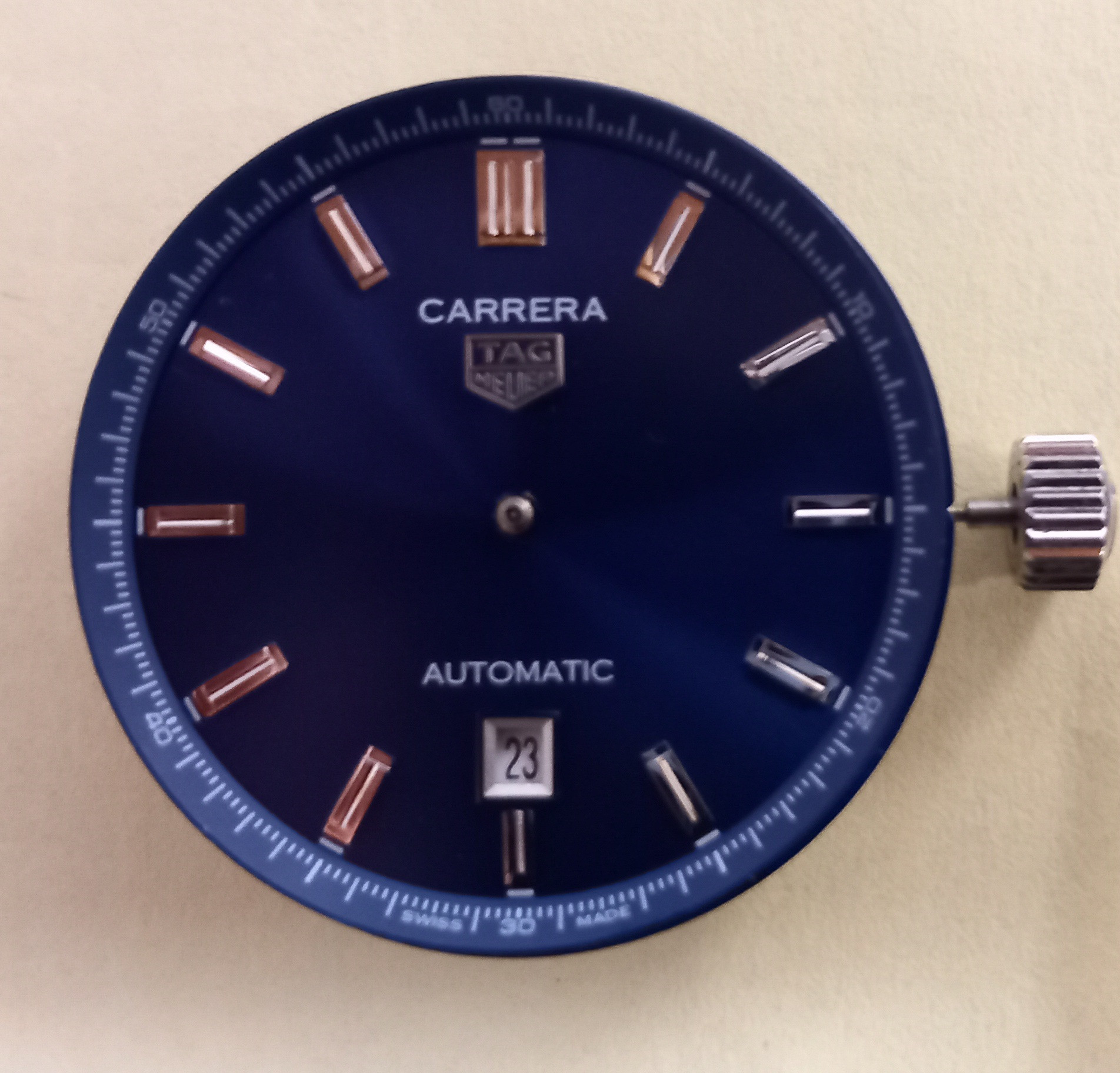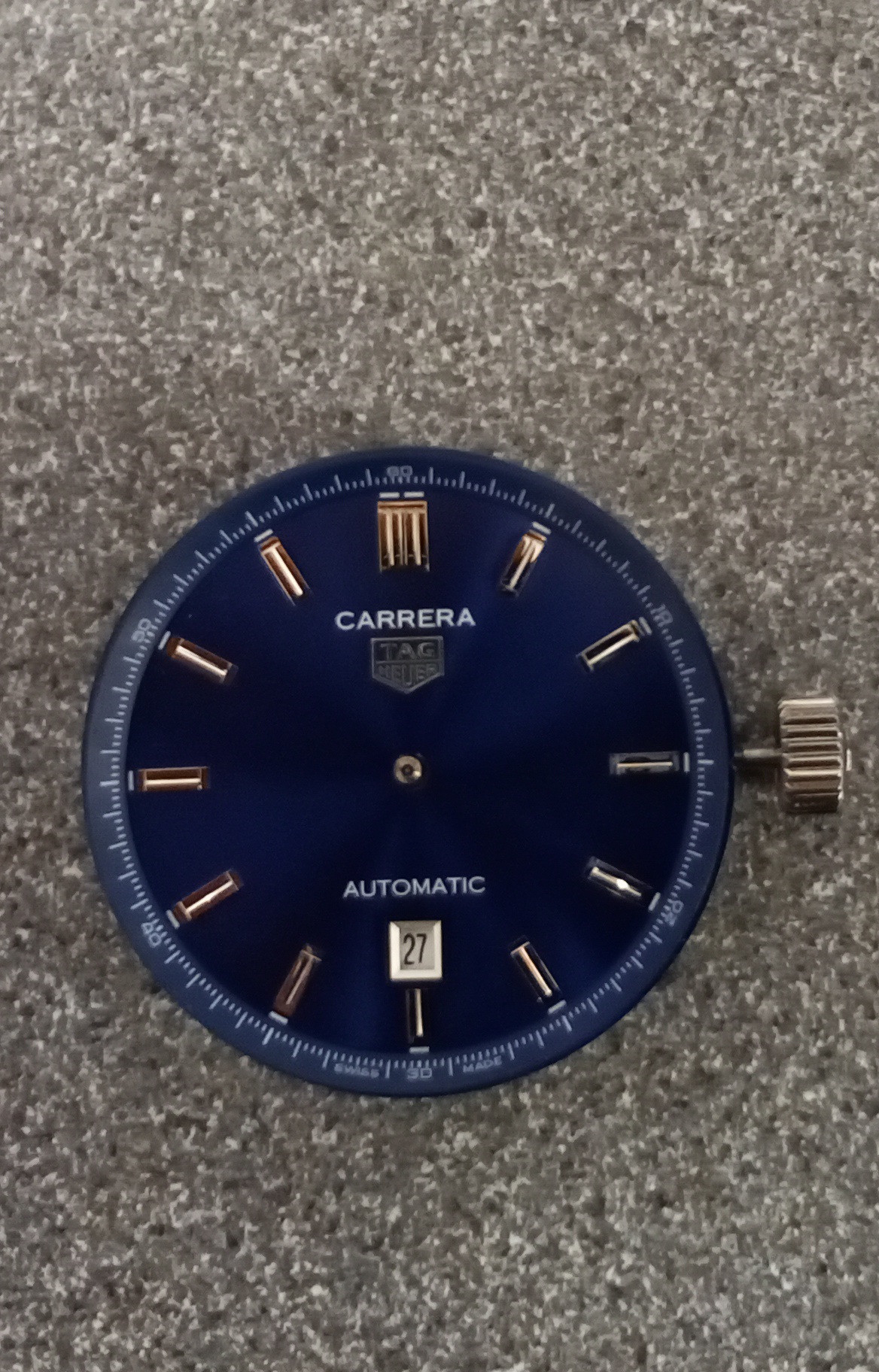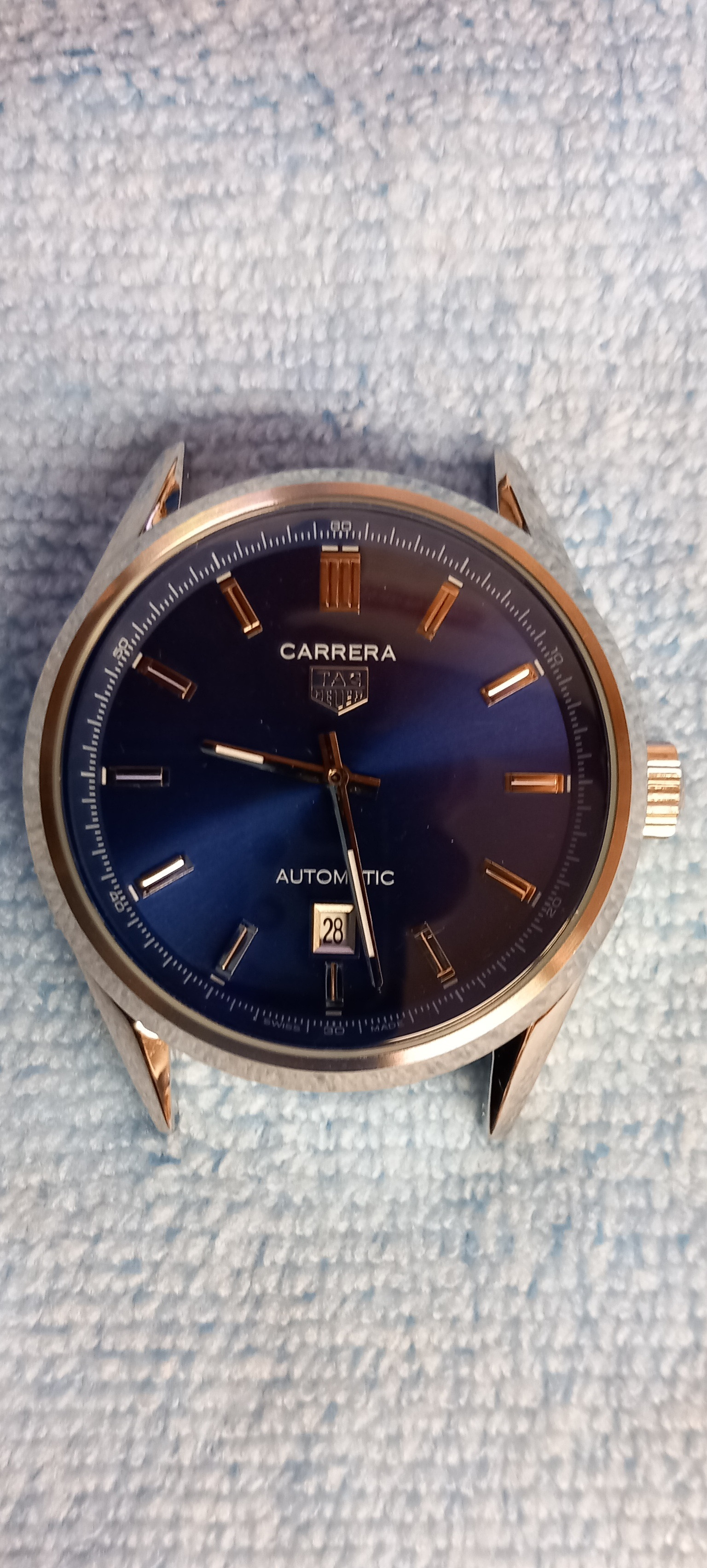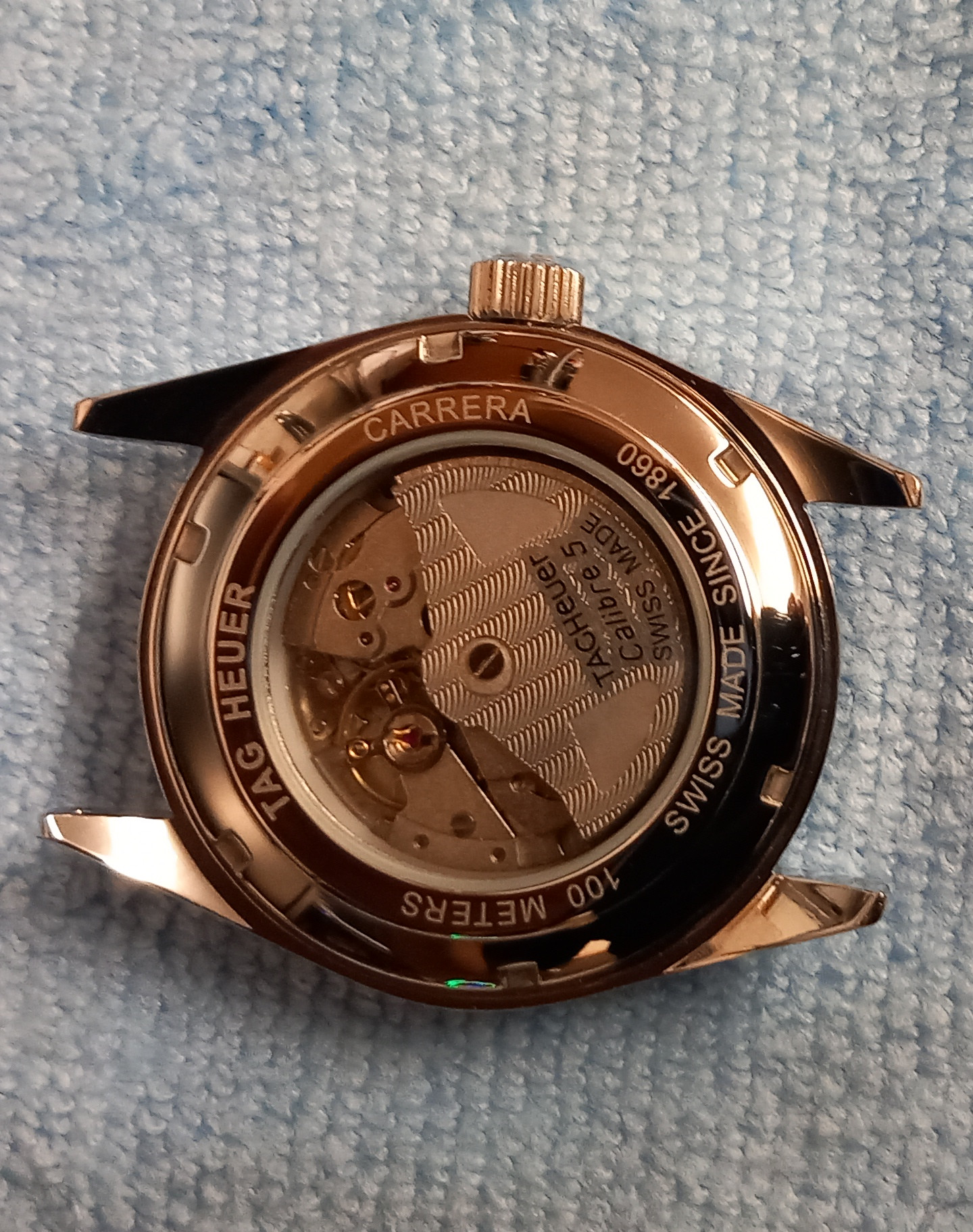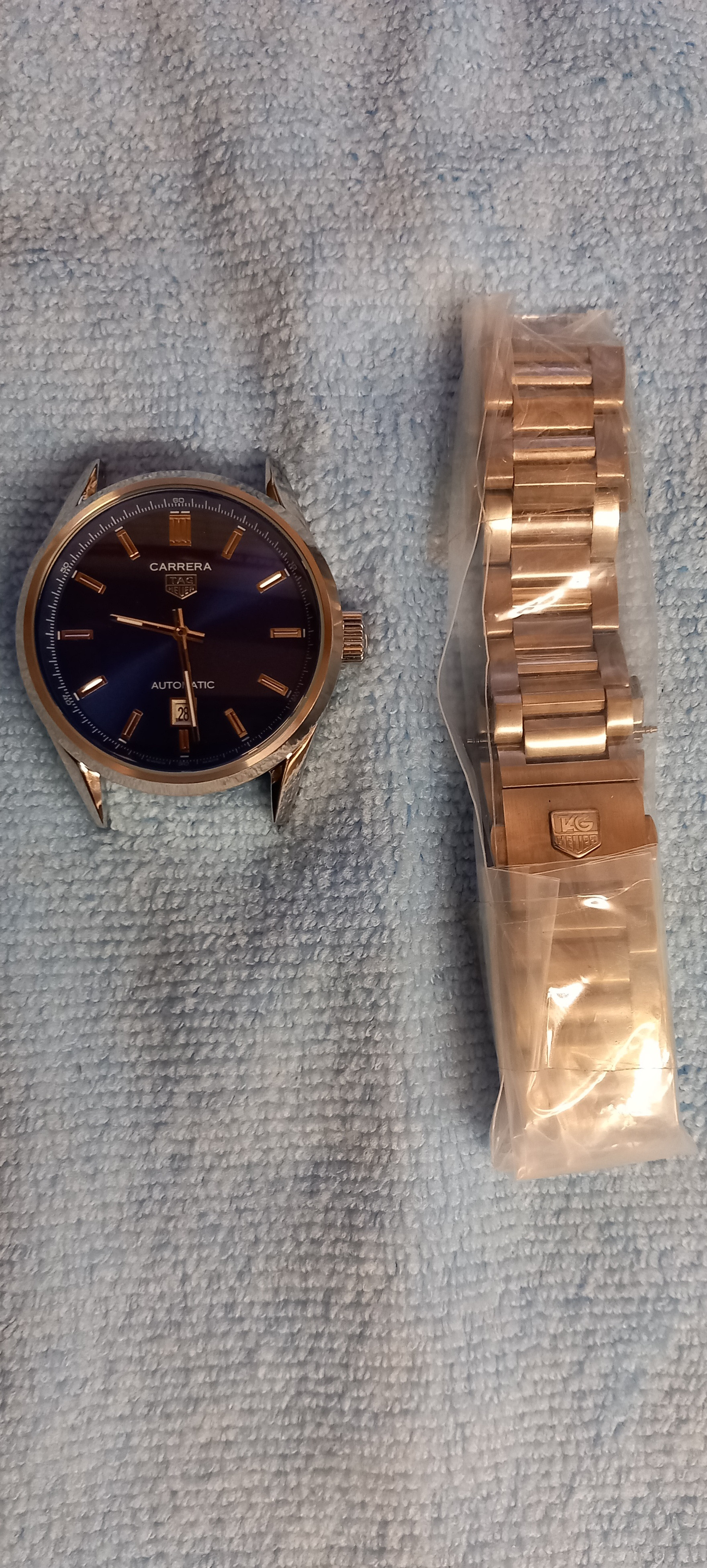OK, so I may be deluded, (yeah yeah), but the watch is a £30 spares or repairs job, it's a pretty wee thing, but if I screw it up I won't be grizzling, jeez it costs more than £30 for a round of drinks at the local 
It's a TAG Heuer Carrera, hands come off and dial loose. the reason for this is that the 2 "legs" on the back of the dial have snapped, where they fix onto the back of the dial. I don't want to try soldering to reattach due to the risk of damaging the finish on the crystal side of the dial.
It is one of those watches where the dial attached to the movement is fitted through the front of the case and then the bezel / crystal pressed on.
So obviously being extremely careful my plan is to bond the dial to the spacer ring, using epoxy applied very sparingly with a needle. It aligns easily as there are 2 very short bits of the legs that are still attached to the back of the dial.
Once that has set, apply teeny dobs of epoxy to the spacer ring on the area that touches the movement on it's very outer edge, well away from the date wheel.
If that all goes well it means I can then reassemble the watch and enjoy it for hopefully years to come. If it doesn't work, salvage any bits useful for the future and bin the rest.
The only issues I see with this is the potential risk of getting epoxy some where it will block the movement, and obviously it's a one shot deal as if the movement craps out in 6 months would likely wreck the dial removing it. The movement runs well atm.
Any comments, or better suggestions welcomed
Pixels so far ....
Stripped down:-
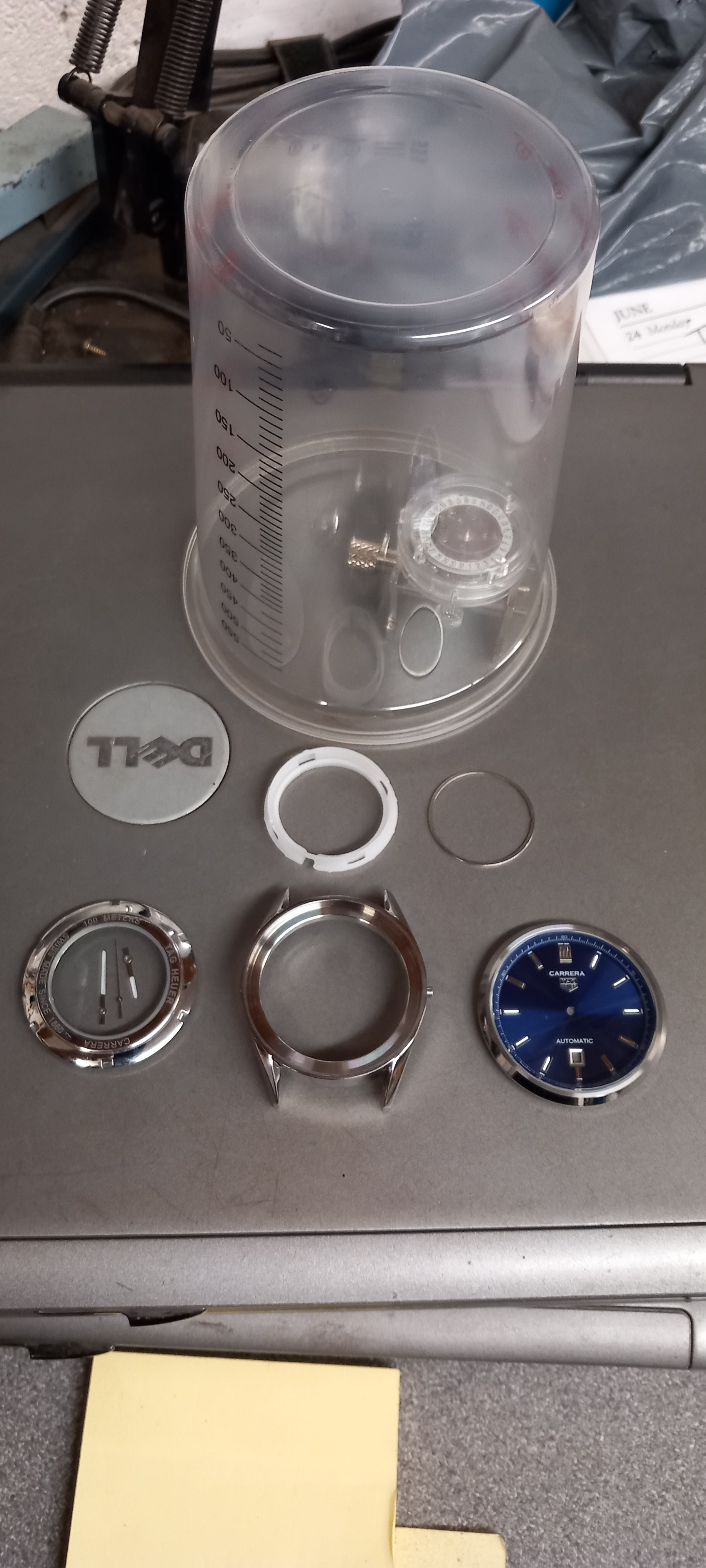
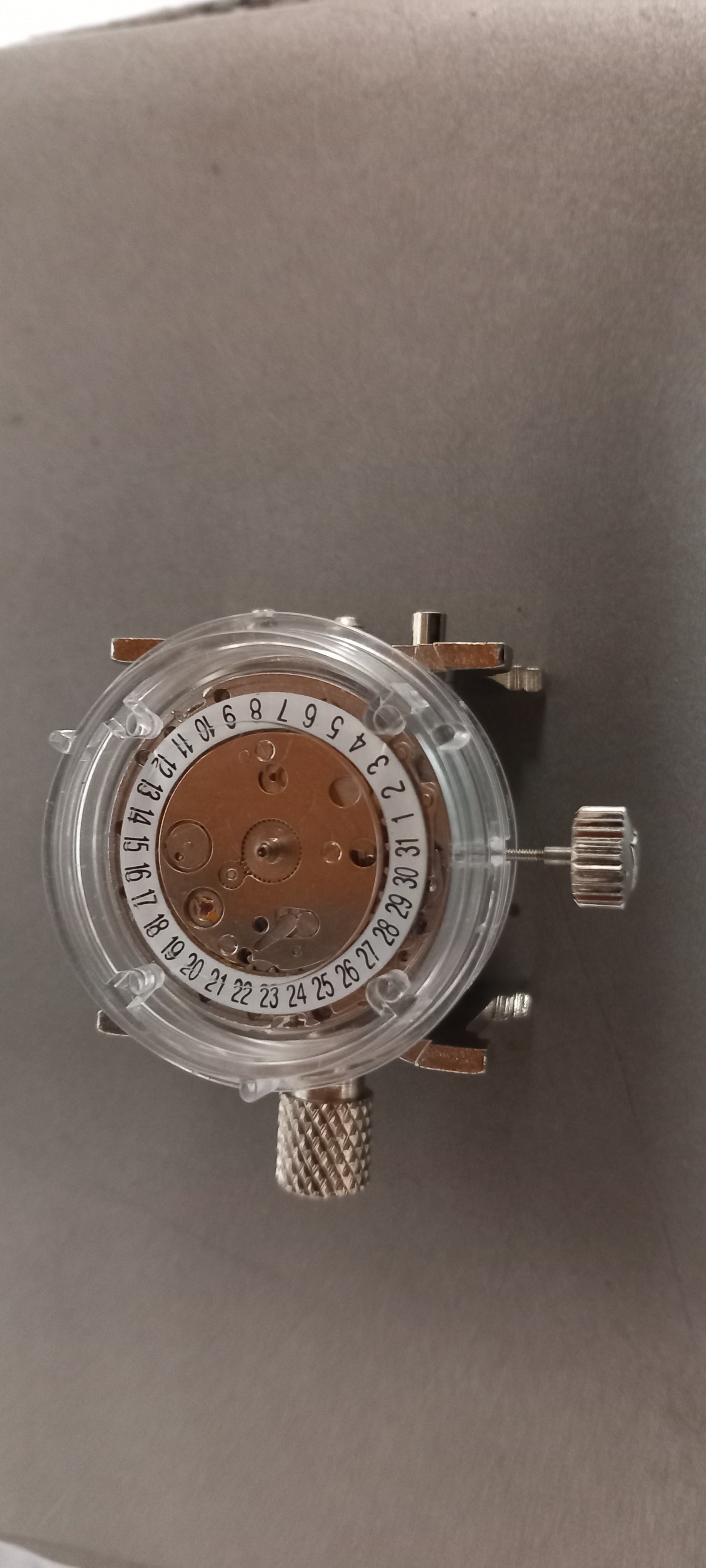
Bond on spacer ring then bond to very edge of movement and reassemble in the usual way :-
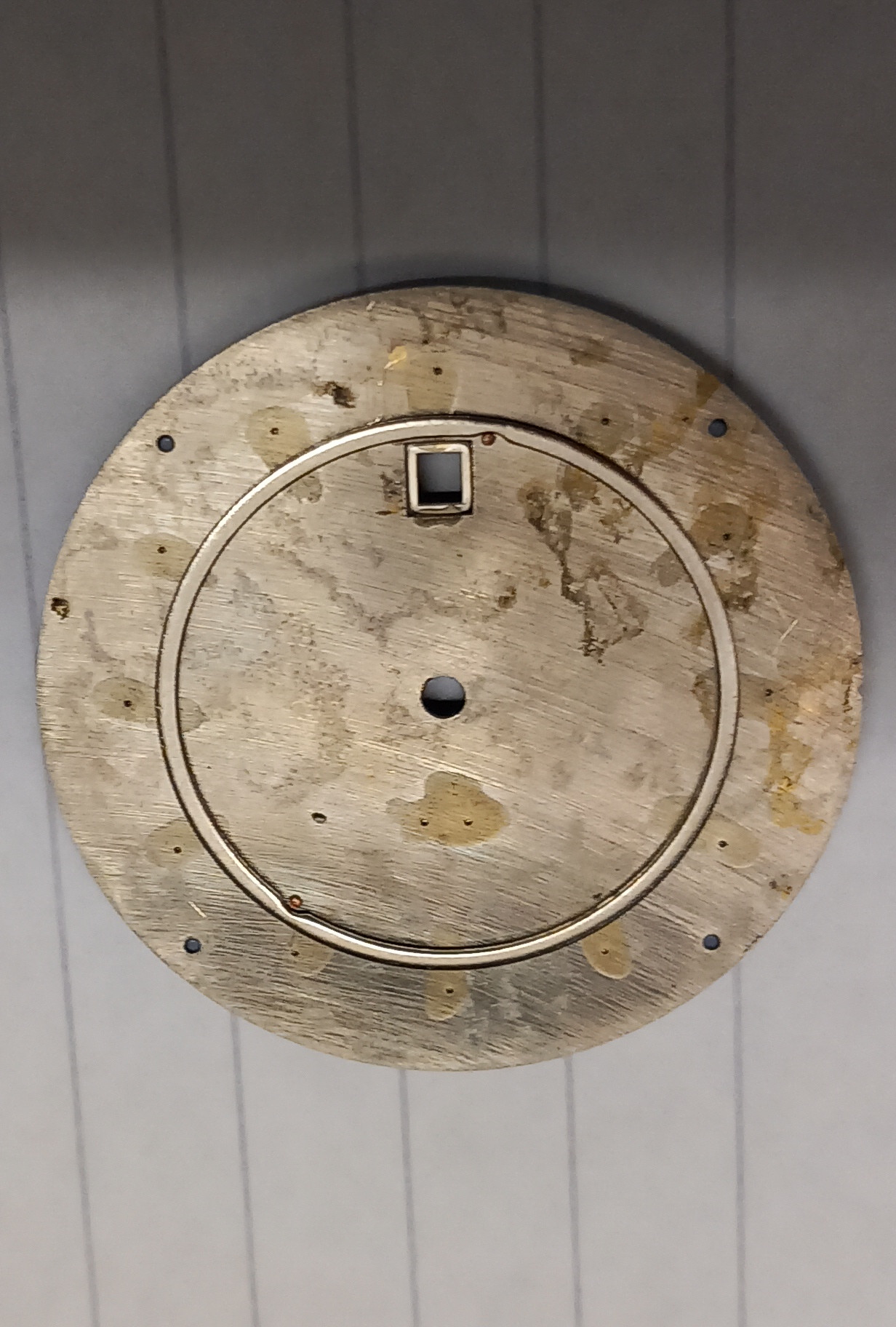
It's a TAG Heuer Carrera, hands come off and dial loose. the reason for this is that the 2 "legs" on the back of the dial have snapped, where they fix onto the back of the dial. I don't want to try soldering to reattach due to the risk of damaging the finish on the crystal side of the dial.
It is one of those watches where the dial attached to the movement is fitted through the front of the case and then the bezel / crystal pressed on.
So obviously being extremely careful my plan is to bond the dial to the spacer ring, using epoxy applied very sparingly with a needle. It aligns easily as there are 2 very short bits of the legs that are still attached to the back of the dial.
Once that has set, apply teeny dobs of epoxy to the spacer ring on the area that touches the movement on it's very outer edge, well away from the date wheel.
If that all goes well it means I can then reassemble the watch and enjoy it for hopefully years to come. If it doesn't work, salvage any bits useful for the future and bin the rest.
The only issues I see with this is the potential risk of getting epoxy some where it will block the movement, and obviously it's a one shot deal as if the movement craps out in 6 months would likely wreck the dial removing it. The movement runs well atm.
Any comments, or better suggestions welcomed
Pixels so far ....
Stripped down:-


Bond on spacer ring then bond to very edge of movement and reassemble in the usual way :-


